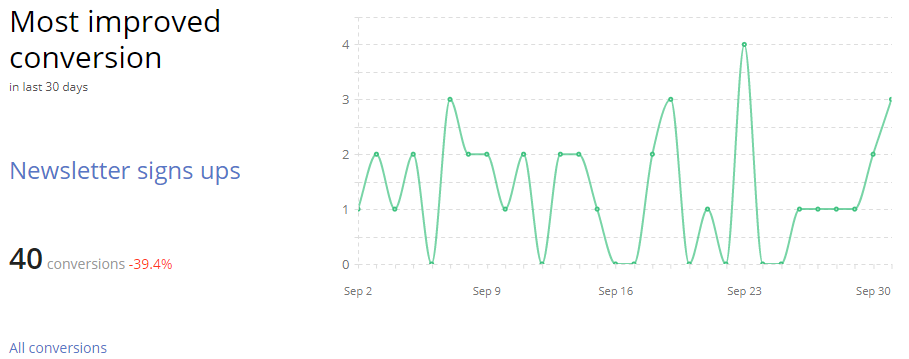Want to know the secret to marketing to customers in 2019?
Here’s a recap of our last two posts about the ‘Digital Experience Cloud’, the tool that enterprise marketers are using to organise, and measure customer vast data sets obtained from a multitude of web properties. An ’experience cloud’ consolidates and processes customer data, their digital experience, along with ‘personalisation’, ultimately creating an effective, intelligent vehicle to understand and deliver customer journeys, as well as attaining business value.
Taking charge
The Progress® Sitefinity™ Digital Experience Cloud (DEC) provides data for opportunity improvement, while the Sitefinity CMS (content management system), enables marketers to personalize and optimise marketing programmes, or restructure web properties on the fly to guide visitors on a personalised customer journey. Together they form a ‘digital marketing command centre’.
The Sitefinity DEC is equipped with data connectors that retrieve customer interactions and information from a variety of sources: Sitefinity CMS, Marketo, Microsoft Dynamics CRM, mobile applications, Salesforce.com and other sources. This in turn provides the marketing team with customer intelligence through the entire contacts database that is accumulated from cross-channel data, persona profiling and detailed user profiles.
Seven activities that define digital experience management
The following seven activities make up the critical path for a successful ‘Experience Cloud’. Remember though that digital marketing requires constant commitment to responding to change and the amending of content accordingly.
1. Define conversions, touchpoints, persona profiles and lead scoring models.
2 Examine reports and recommendations.
3. Act upon the insights.
4. Configure content personalisation.
5. Perform targeted email and personalisation campaigns.
6. Modify and amend content as required.
7 Return to one.
So how do you use the DEC to get the max for your buck?
Understanding and profiling your audience
True understanding of visitors and customers is the primary goal of analytics (in this context).
Having an extensive context enables marketers to see interactions between anonymous site visitors, known contacts or existing customers, as well as various aspects of a company’s digital marketing function. As a digital marketing specialist, you need to understand your customers and their journey through your web property to make better marketing decisions about how to design your customer journey, display content, build a sales funnel, etc.
By profiling your audience, you are able to classify the visitors that interact with your company so that you engage them more efficiently and optimise your messaging for them.
Creating persona profiles with specific characteristics and preferences
A persona is a fictional character type that represents real customer requirements, emotions and similar behavioural patterns. Using visitors’ to your website’s behavioural patterns, you can classify them to create the rich persona profiles that best describe the specific type, or category, of visitors.
The DEC lets you set scoring rules that define specific personas. Scores are measured as points that a contact earns when completing a certain activity or interaction on the site. When a contact scores enough points to pass this threshold, they are classified to that persona.
The DEC is dynamic and a contact may be attributed to more than one persona if they pass the threshold of these personas. You can create as many personas as required for your site.
Persona scoring rules allow you to distinguish between visitors who browse a few pages on the site and accumulate points by chance, and visitors who should indeed be classified under a specific persona.
When creating personalisation segments (see Personalisation below) in the Sitefinity CMS, you can base the segments on any persona that you defined in the DEC, enabling the delivery of personalised content to contacts that represent, or are associated to, a certain persona.

Conversion
Lead scoring is the core method you use to rank the visitors you define as ‘leads’ and measure their readiness to convert. Once your visitors pass your pre-determined thresholds, you can prioritise and notify your sales team to contact ‘qualified leads’. Those ‘leads’ that are still below the required scores can be nurtured with relevant, personalised content with the aim to increase their interest and scores.

Attribution
The goal of attribution is to understand the value of a download or page view, display ad, podcast, video, white paper or other interactions in each customer’s buying journey. Hypothetically, this makes it easier to decide what tactics and content you should develop.
What is crucial to attribution measurement is not merely if contacts hit a touchpoint, but whether this interaction actually increases the conversion rate for a particular report.
Aside from defining your high-level marketing goals and the conversions you hope to achieve and the strategy and initiatives you will use to attract and retain customers via your website, you also track a number of key engagement points of contacts on your website. The impact of these touchpoints is measured to indicate if and to what degree they influence contacts’ conversion rates.

Having ample marketing attribution reports helps you understand which touchpoints or interactions have the biggest impact on conversion rates and focus and optimise your marketing efforts.
The Sitefinity DEC, helps you select interactions, define conditions, track conversions and create high-level conversion reports to measure which successful interactions from your website, for example, are deemed as valid conversions for the various scenarios and for different customer segments or personas. You also will define a specific timeframe for tracking, a definition of customers whose behaviour will be tracked, any interactions that are not relevant to these reports and any recommendations.

Past conversion data can be used to provide predictions and recommendations, helping marketers with their decisions and future campaigns.
This predictive analytical engine helps you to augment your conversion rates so you can concentrate your efforts on the activities and initiatives that convey the greatest impact. In real-time. Sound and constant predictions provide new recommendations for ongoing suitable courses of action to obtain your business and marketing goals.
The Sitefinity DEC applies machine learning to relate how groups of customers and prospects interact through all channels. Interestingly though, the platform also provides specific recommendations on how to move those customers toward their goals more effectively.



